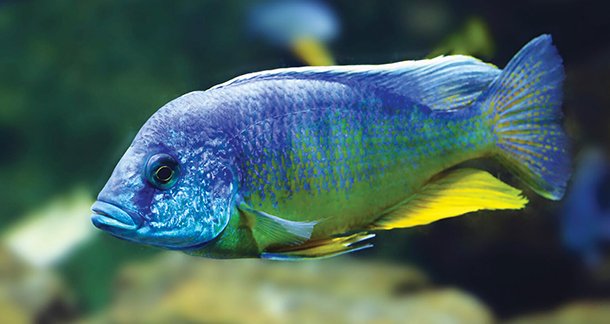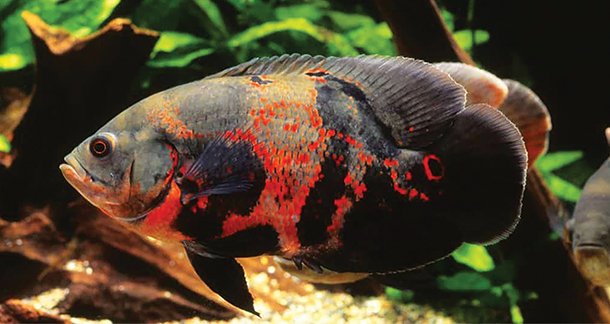Nature and its mysterious way. Perhaps one of the most beautiful species/genus created by nature is cichlid. These are vividly colored, highly interactive, social and display a wide range of emotions, characteristics. From African lakes such as Malawi, Tanganyika, Vitoria to South American & Central American countries like Brazil, Peru, Colombia even available to our Southern India (Etroplus Canarensis, Etroplus maculatus) these are widely spread. They are found in highly acidic water (<5ph) (Nanochromis Transvestivus) to highly alkaline water (>8ph) (Alcolapia alcalica). I have kept primarily Tanganyika (mostly), Malawi (premium ones), South American (Apistos, Angel, Oscar, Ramirezi, Severum) so will try to speak from my own experience of 14+ years.
Each species has their own water parameters requirement
|
Cichlid Type |
pH |
Temperature(°C) |
Hardness (dGH) |
Aquarium Size |
Water Type |
|
Tanganyika |
8.0 to 9.0 |
22 to 28 |
10 to 20 |
Varied – shell dweller can be kept from a 18*18*12 to 36*12*12. For larger species a 4ft and above is ideal |
Soft to moderately hard; rocky structures |
|
Malawi |
7.8 to 8.6 |
24 to 28 |
10 to 20 |
Due to their aggression 4 ft and above is recommended |
High in minerals; rocky environment |
|
Victorian |
7.5 to 8.5 |
22 to 28 |
10 to 20 |
4ft and above is recommended |
Slightly turbid; varied substrates and vegetation |
|
South American |
6.0 to 7.5 |
24 to 28 |
5 to 15 |
Smaller ones like Apistos etc can be kept in 30*12*12 for a pair, Angels prefer a tall tank. And Oscar and other larger ones a 4ft and above is ideal |
Soft to moderately hard; varied habitats (rivers, lakes, and floodplains) |
|
Central American |
6.5 to 8.0 |
24 to 28 |
5 to 15 |
A 48*18*18 and above is ideal |
Soft to moderately hard; rivers and lakes, often with structure for hiding |

Malawi Cichlids – Of all these cichlids the most colorful ones are Malawi ones. These comes in varied shape and catchy colours. With an attractive price range these are widely popular into hobbyists. From low priced ones Labidochromis caeruleus (Yellow Lab), Melanochromis auratus (Golden Mbuna), Melanochromis Johanni (Electric) to premium ones Cynothilapia Lion Sanga, Cynothilapia Hara Reef, Metriaclima Zebra Gold these cover a wide range.
These cichlids primarily are herbivorous. In wild these ones graze on the algae of the rocks. Occasionally along with algae they sometimes consume smaller snails or smaller invertebrates, but these are not their primary diet.
Feeding – When keeping them in aquarium ensure that these are regularly feed with an herbivorous diet. Feeding them a carnivorous diet will cause Digestive Issues, Nutritional Imbalance, Long Term Health Issues, Altered Growth Patterns. I feed mine one Teraa Hara cichlid and sometime Hikari Cichlid Excel. Soak the pellets 5 minutes into water so they soften and easily digested by cichlids.
Care– Easy to Moderate.Just ensure that water parameters are kept as per their requirement and no presence of ammonia, nitrate, nitrite.
Breeding – Easy to Moderate. Start with a group of 6-8 juveniles and once a pair is formed, if you want to avoid your aquarium becoming a war zone remove the others and let the pair breed themselves. They take care of their babies properly.
Tanganyika Cichlids – My personal favourite. From pocket rocket (Neolamprologus multifasciatus, Occeatus Gold) to elegant monsters (Altolamprologus Calvus, Frontosa) and super monster Emperor Cichlid these cover a wide range. Except the Tropheus cichlid which needs a similar herbivorous diet like Malawi (mentioned above) the remaining population prefer a carnivorous diet which includes insect/fish meal in their diet.
Feeding – When keeping them in aquarium please ensure that they are provided with a high protein (animal diet). Feeding them an incorrect diet can lead to Inability to digest, Nutritional Deficiencies (Lack of essential proteins), Weak Immunity, Poor Growth Rates. I feed mine one Teraa Carna Cichlid and Nutrafin Bug Bites Cichlid Formula. Soak the pellets 5 minutes into water so they soften and easily digested by cichlids.
Care– Easy to Moderate. Just ensure that water parameters are kept as per their requirement and no presence of ammonia, nitrate, nitrite. Geneally these ones prefer a bit colder water.
Breeding – Easy to Moderate. Start with a group of 6-8 juveniles and many of them are harem breeders. For example, an occealtus gold single male can mate with multiple females and females have their designated areas marked. Generational care has been also noticed in some species like Pulchers. For better survival babies for their first 10 days can be feed with hatched brine shrimps.
South American Cichlids
I have generally kept the small to medium sized ones so will speak about them only.
Smaller to Medium ones – Colorful ones like Apistos, Ramirezi, Angels, Discus etc. falls into this segment. These cichlids prefer a bit softer water than their African counterparts.

Feeding – Their diet generally is made up of small insects, crustaceans, inverts. As in their wild their diet is primarily made up of microfauna, feeding them an insect protein diet will ensure their longer life. Feeding smaller animals larger animal protein can lead to Inability to process high proteins, lack of essential nutrients, growth issues, organ stress, ammonia build up. I feed mine one Teraa South American Delights and Nutrafin Bug Bites Tropical Formula (0.7-1mm) for better results. Soak the pellets 5 minutes into water so they soften and easily digested by cichlids.
Care– Easy to Moderate. Just ensure that water parameters are kept as per their requirement and no presence of ammonia, nitrate, nitrite.
Breeding – Easy to Moderate. Start with a group of 6-8 juveniles and let them form a pair. They are not as vicious as Malawis but generally for a better fry survival rate its better to keep the pair separated and feed the young ones hatched brine shrimp eggs for first 10 days. Some of the apistos can be harem breeder. But have seen species like Panduro where alpha female select the male, and might kil the weaker males, females. So studying prior hand would be beneficial.
Central American Cichlids
I have kept Wild Oscars so will share my experience of them. They are some time called as aquatic dog for their behaviour. These fishes are inquisitive and can identify their owner properly. Jaguar Cichlid, Fire mouth Cichlid, Green Terror, Midas cichlid also falls into these segments. And these can sustain a wide range of water parameters. Some keepers prefer keeping them in their ponds for better growth and coloration.
Feeding – These can eat anything which can fit their mouth. Highly carnivorous and a diet which contains higher amounts of animal protein is ideal for them. Though I personally prefer feeding them sinking cichlids as it reduces chances of bloat, many hobbyists prefer floating cichlids. I feed them NLS Cichlid Formula and Borneo Cichlid Max. Soak the pellets 5 minutes into water so they soften and easily digested by cichlids.
Care– Easy. Just ensure water parameters is ideal and no presence of ammonia, nitrate, nitrite.
Breeding – Easy to Moderate. Start with a group of 6-8 juveniles and let them form a pair. They are not as vicious as Malawis but generally for a better fry survival rate its better to keep the pair separated and feed the young ones hatched brine shrimp eggs for first 10 days. I had moderate success in breeding wild Oscar (which recently got reclassified by Ivan Mikolji). They lay lot of eggs and care for their eggs properly.
Would like to end saying these are very colourful and probably largest genus in aquarium industry. So please do proper research before buying them as they have varied care and diet requirements. Ensure proper water parameters, an excellent filtration, regular water change, with a good variety of diet will enhance their long term health. Deworm them in every 6 months along with mixture of garlic and multivitamins as a supplements add on to their diet will also increase their well being.

